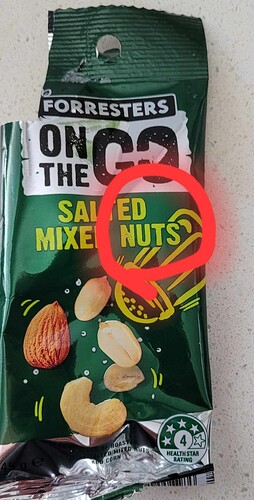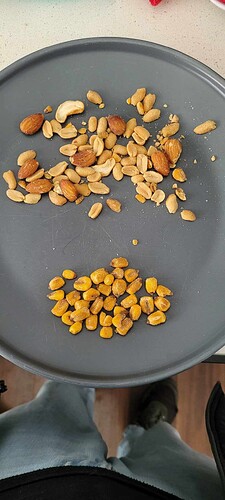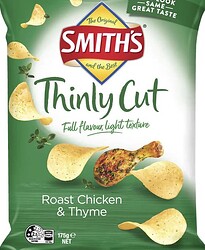Unfortunately MosBurger has closed.
The parent company in Japan?
Or the Australian businesses?
Or your nearest MOS Burger outlet?
Or something else?
The one Scott mentioned in Brisbane.
Maybe people are attracted to stores that display larger unrealistic images of their products.
Some customer’s of Burger King in the US are suing the burger chain because menu and marketing pictures don’t meet reality:
In the US, McDonald’s and Wendy’s are facing a similar lawsuits.
I am yet to go to a food outlet or restaurant where pictures on menus look exactly like what is served. If it is a successful court case in the US, it will be interesting if it affects images used by companies. I suspect it won’t, and each photo will have wording indicating it is for 'illustrative purposes only and served food may be different in size and appearance’.
I find Japanese venues to be close enough. In Japan the food models on display in restaurant windows could confuse many people with their realism and what you see is close enough to what you get more often than not. No models? Their photos are not too far behind.
Absolutely! Honesty in advertising risks losing business and adding the text is cheap.
Same can be said for nearly every cookbook and many of the cooking shows. It’s not new. There’s frustration from James May in his streaming series “Oh Cook” at the added inconvenience. The reveal includes having to carefully arrange one finished plate on a revolving stand before they can move on.
One secret to success with any cook or pack shot is having some help. Comes in the form of Nikki Morgan a home economist. Food styling is its own art form. Is it really a surprise, and also a feature of the fashion industry with the images it uses to promote its products.
Not the only MOS Burger outlet listed for Brisbane. The status of the others 250 Albert Street, Sunnybank, et al needs clarifying.
Some interesting pack shots, this time as a header for an ABC News article from 2019.
P.S.
Note Woolies has also fessed up, $300M of under payments to staff over 9 years.
A whole article in Petapixel on food photography and the lies it sells. American based but here, tis all the same.
Slightly different to the more common mixes that is mostly peanuts that are much cheaper than the cashews, almonds, Brazil nuts etc that feature on the pack pics.
Ouch - I hope they have good dental cover as the odd bit of fried corn can be very hard.
Corn is a grain and not a nut. I hope that the poster returned the product to Aldi for a refund as it is misleading advertising.
It does say “and corn” in the fine print at the end of the ingredients towards the bottom of the pack shot. The image on the pack dies not feature corn, nor is corn given equal prominence as an ingredient in the pack brand labelling.
Worthy of consideration for a mandatory compulsory product recall? Although if it’s like many Aldi products a “special buy” the product may have come and gone. I wonder if the ACCC has the resources or legal capacity to take a more direct and punitive action assuming there is a case to answer, against Aldi and what appears to be an independent Australian supplier.
There are ‘toasted corn kernels’ aka ‘corn nuts’. ‘Mostly’ is not obvious from the photo - although it appears roughly 50%. Whether one agrees with the terminology is not for here but
Corn nuts are not exactly cheaper as compared to most ‘nut nuts’. They might add a flavour kick when accompanying chicken flavoured crisps.
Note the chicken leg on the label. ![]()
Well there would be little in that pack since peanuts and cashews are not nuts either.
Botanically correct.
It’s in common use and our everyday understanding to describe both as nuts. How many Aussies would say calling a corn kernel a nut is common use?
Reality is in agriculture corn is treated like a grain, at home we most often treat it like a vegetable, while botanically corn (maize) is a grass and the cob is a fruit with the seeds on the outside.
An exception might be in the US where corn also finds use as a political instrument.
@PhilT mentioned common use in the US.
“Corn nuts” are a processed and substantially transformed product: https://en.wikipedia.org/wiki/Corn_nut
If one is not to be mislead (given the lack of local common use) the product might be better labelled as containing deep fried or roasted corn kernels displayed clearly and prominently on the packaging.
P.S.
Better to call them cancha as in Peru or chulpi as in Ecuador.
Has toasted or fried maize been hiding in our mixed snacks for decades?
And tomatoes are not a vegetable either. And almonds don’t exude milk. And usage doesn’t change language. And we are off to the races! Giddyup Dobbin!
Possibly, as corn allergies exist. In Australia, corn kernels would not be expected in a bag containing nuts.
In reality, it is a grain and not a nut.
Corn nuts are a concocted marketing term and have no relevance to what is termed a nut in Australia. If it did, almost every product which contains corn starch, corn flour etc would need to have nuts as an allergen. This means most processed foods would not be off the radar for those with nut allergies.
I treat it as a carbohydrate.
Regardless though consumer protections in the ACL will be based on how the “average” customer will interpret the description (at a point in time), even if the description is in some esoteric sense e.g. botanically, incorrect.


